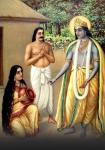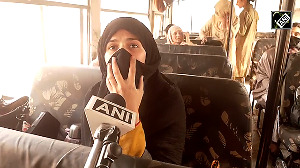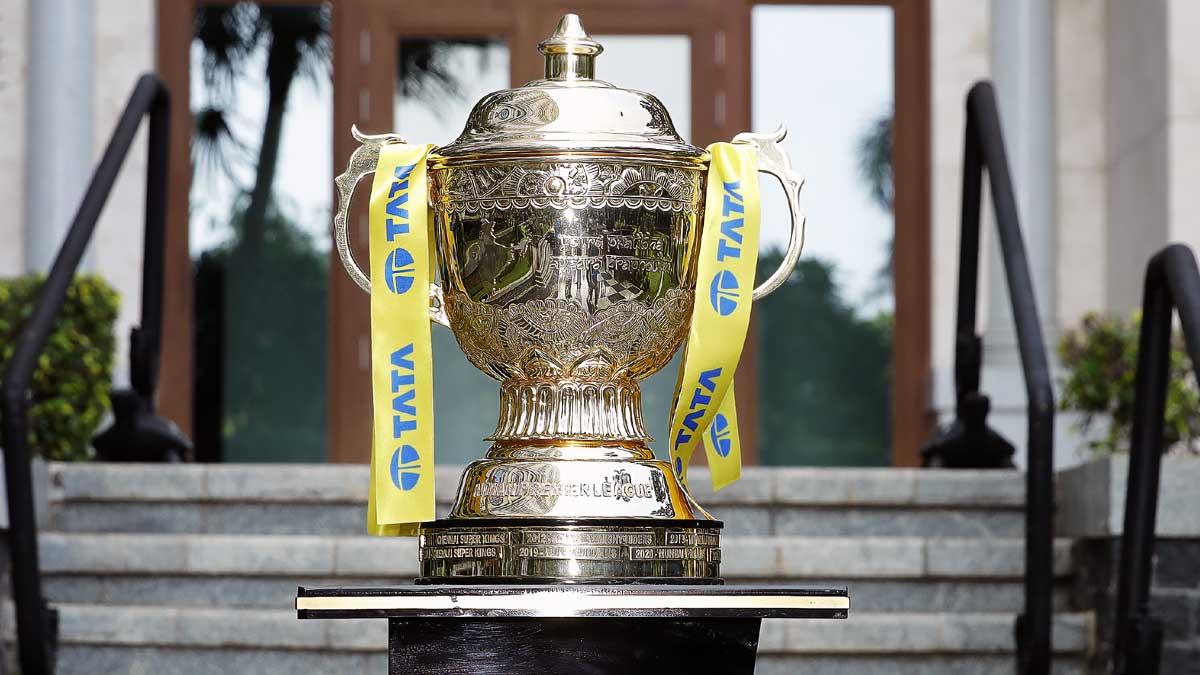Editor's Note: Dr. Cam Battersby AM retired in August 2002 as Director of the Australian Cricket Board (ACB); he was at the time amongst the senior-most directors of the ACB, having served for over 14 years.
He was also chairman of the Queensland Cricket Association for seven years, before relinquishing that position to his protege Damien Mullins in August 2000.
He has managed Australian sides to South Africa, India, Sri Lanka and Pakistan, and is deeply respected by players and colleagues in the ACB. He also served as member of the Australia-India Council.
As a surgeon, he enjoys a brilliant reputation; he is, further, extremely well-read and articulate, with a particular yen for Ancient Greek and Roman history.
He has a lot of affection for the Indian sub-continent, and takes keen interest in India's cricketing development.
In the late 1990s, an email from him landed up in our inbox; in response to a critical analysis of the role of the then coach. His mail sent, he was careful to mention, not in his capacity of director of the ACB, but of a private individual and aficionado of Indian cricket offered a detailed analysis of what was going wrong, and what the correctives should be.
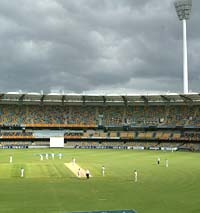 Since then, a Cam email has been a looked for addition to our inbox; each of his thoughts has helped clarify our own thinking and, often, even pointed out avenues for thought.
Since then, a Cam email has been a looked for addition to our inbox; each of his thoughts has helped clarify our own thinking and, often, even pointed out avenues for thought.
Cam as someone who grew up at the Gabba and later went on to manage Queensland cricket, knows the venue of India's upcoming first Test against Australia as few others do. Follows, his first person take on the Gabba:
When I was barely into my teens, just after the Second World War, I began a love affair with the Gabba.
I would park myself as often as I could in the 'Outer' area, which consisted of a grassy hill with a couple of old wooden sheds at the top, containing a few hard wooden benches.
Further round, some magnificent Moreton Bay Fig trees (sadly no longer there) would provide the only other shade. On the other side of the ground were three wooden 'grandstands', derelict by the standards of today. A wooden hut with a few threadbare 'armchairs' in front comprised the player facilities.
My spot was a concrete slab that ran around the 'Outer', on which I could perch and dangle my legs, and peer through a wire lattice fence topped by barbed wire. The ground had been used as a training facility during the war. Imagine the thrill when Trevor Bailey played an uncharacteristic shot and was caught by my schoolboy hero, Ron Archer, in front of me on the mid-on fence.
The origin of the name 'Woolloongabba' is unclear. One view is that it was an aboriginal name, signifying 'a fighting place' (Smith, 1995). A big tribal fight is in fact recorded as having taken place nearby, in 1853.
In 1895, this 'One Mile Swamp' between the neighbouring suburbs of Kangaroo Point and South Brisbane was handed to the fledging Queensland Cricket Association.
The swamp needed to be drained, and there is still a drain under the 'Gabba' that may well be the original one.
The area was then filled in, before the initial match in 1896 between the Press and a Parliamentary XI that, presciently enough, ended in a tie. The first English side to play at the Gabba was A.E. Stoddart's XI in 1897.
Queensland was finally admitted to the Sheffield Shield Competition in 1924, when the inaugural members in the southern states could no longer reject the logic of a series of crushing defeats. It was to be sixty-one years before a Queensland victory in that competition was achieved, but more of that anon.
The Gabba was not judged ready for Test cricket until 1936. Tests were played in 1928 and 1933, against England at the Brisbane Exhibition Ground.
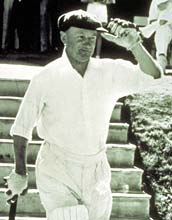 The first of these was Don Bradman's debut for Australia, which was not greatly successful. He was caught for 18 in the second innings, prompting Maurice Tate to castigate the successful England bowler for robbing him of his 'rabbit' -- gamesmanship was obviously alive and well in 1928!
The first of these was Don Bradman's debut for Australia, which was not greatly successful. He was caught for 18 in the second innings, prompting Maurice Tate to castigate the successful England bowler for robbing him of his 'rabbit' -- gamesmanship was obviously alive and well in 1928!
The 1933 Test was the Fourth in the infamous Bodyline series, and England wrapped up the series after Jardine ordered Eddie Paynter from his hospital bed. Paynter was suffering from acute tonsillitis in that pre-antibiotic era, and played a series-winning innings. Ironically the match concluded on the exact day that Archie Jackson, a young Australian of legendary batting talent, succumbed in Sydney to tuberculosis at the age of 27.
Shield cricket began at the Gabba in 1932 with a match against NSW, in which the aboriginal pace bowler Eddie Gilbert, seriously quick for a few overs, dismissed the now champion Bradman for a duck.
The legality of Gilbert's action was questioned, evoking from Queensland the now time honoured response that no one had called him in the past obviously, times do not change, as any student of history will attest.
The first Test at the Gabba in 1936, against Gubby Allen's Englishmen, was washed out on the last day, when Australia was chasing an improbable 381 for victory.
The war then intervened, and the next Test was not until 1946 my first Test, aged 11. An aging and ailing Bradman had agreed to play. Early in his innings, he played a ball from Voce waist high to Ikin in the slips. It seemed a simple enough catch, and the England appeal was belated. Umpire George Borwick ruled bump ball. Many thought otherwise, but Lindsay Hassett, at the non-striker's end, agreed with Borwick. The Don went on to score 187.
So was history made, for he may well have retired otherwise.
Australia made 645, and then two classic Brisbane hailstorms hit the ground. The second one washed the stumps to the boundary fence. The mischievous Syd Barnes climbed onto the roof of the English dressing room, and dropped a large block of ice used to cool drinks, in front of the bemused Poms!
This was before the days of covered wickets, and England was beaten by an innings and plenty, but not before captain Bradman had brought out the inexperienced Toshack before the start of play, and showed him where to pitch the ball on a Brisbane sticky. He went on to take 6/82 in the innings and nine for the match, as did Miller. Lindwall had been sidelined by chicken pox.
Bradman again scored 185, against Lala Armanath's talented and exciting Indian tourists in 1947, before Toshack demolished them on another wet wicket. This was the tour when Vinoo Mankad made cricket history by running out Bill Brown for backing up too far, but that was in Sydney.
The 1950 Test against England was again rain affected. Australia had made 224, before the rain again put England on an almost unplayable wicket. Freddie Brown, who had previously toured with Jardine in 1932, declared at 7/64. Australia was soon 3/0, but two could play at that game and Lindsay Hassett called the Australians in at 7/32.
England failed to score the required 193, despite a masterful 64 not out by Len Hutton, one of the greatest innings I have ever seen played in difficult conditions. Brown had kept Compton back for the last day to partner Hutton, but he looked somewhat unwell on arrival at the crease, and didn't last long.
At this point, the administrators saw reason rather than tradition, and in future series wickets were covered.
Cricket at the Gabba over the time I have been watching it has never been short of incident. In the days before mechanical rollers, it is said that the old horse used to back into the shafts whenever he saw Bert Ironmonger come in to bat.
A story I can vouch for myself occurred when Jack Farquhar, the curator, was rolling the wicket; he suddenly sprinted for the fence and returned at full speed with a hessian bag, just in time to place it under the horse's rear end. A large black bull played a similar trick in the marquee during a promotion for the Queensland Bulls in the 1990's.
On another occasion Kevin Mitchell Senior, the curator, advanced on to the ground with his covers during play, only to be waved away by the umpires one of whom was local. Kevin kept coming, and within a minute or so the ground was inundated, but the wicket was saved. During another hailstorm, Dean Jones, the Australian 12th man, brought out a swag of helmets to protect the ground staff while they put on the covers.
The two most dramatic events I can remember were the Tied Test against the West Indies in 1961 and the no balling of Ian Meckiff out of Test cricket in 1963.
The story of the Tied Test is too well known to need re-telling, but there are a few bits of background interest. Peter Burge was fond of telling the story of how he became part of the show. He was at work in Brisbane when he received a phone call from someone who said he was Sir Donald Bradman. He was about to tell the practical joker what he could do with his phone call when he recognised the voice.
It was indeed the Knight, and the Chairman of Selectors, who was calling on his services as 13th man. Bob Simpson played in this Test, and was Australian coach nearly 30 years later in Chennai for another tie. The well-known doyen of radio commentators Johnny Moyes had gone back to Sydney, believing the match was over, and the local Clive Harburg inherited one of the most famous calls in cricket history.
It was well known prior to the First Test against South Africa in 1963 that something unusual was in the air. Rumours abounded, but no one was sure what. It turned out to be the end of the road for Ian Meckiff when Colin Egar called him repeatedly from square leg for throwing.
Richie Benaud, in his last match as Australian captain, took him off immediately and did not seek the opinion of Lou Rowan at the other end. Rowan had previously passed Meckiff in a Shield match, and would only make the enigmatic comment that 'my critics can please themselves whether I was satisfied with him, or not as competent as I should have been'.
This episode may explain a little of the Australian forthrightness when it comes to throwing. I don't know what the subsequent chairing of Meckiff from the ground by members of the crowd says of the Australian sporting character.
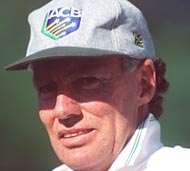 If there was high drama at the Gabba on these two occasions, it was nothing like the sheer emotion when Queensland finally won the Sheffield Shield in 1995, after 61 years of trying, and 14 times coming second. Greg Chappell used to remark that once we had got the monkey off our backs we would go on to win repeatedly, and history has proved him right. Carl Rackemann took the last catch, and in his excitement forgot to pocket the ball. It was returned recently by a supporter, and is now in the archives of Queensland Cricket. Grown men cried, and the euphoria was such that I felt obliged to apologise to Jamie Siddons, the South Australian captain. He replied, 'Enjoy the moment, mate. You'll never have another like it'.
If there was high drama at the Gabba on these two occasions, it was nothing like the sheer emotion when Queensland finally won the Sheffield Shield in 1995, after 61 years of trying, and 14 times coming second. Greg Chappell used to remark that once we had got the monkey off our backs we would go on to win repeatedly, and history has proved him right. Carl Rackemann took the last catch, and in his excitement forgot to pocket the ball. It was returned recently by a supporter, and is now in the archives of Queensland Cricket. Grown men cried, and the euphoria was such that I felt obliged to apologise to Jamie Siddons, the South Australian captain. He replied, 'Enjoy the moment, mate. You'll never have another like it'.
Successive redevelopments over the last 40 years have transformed the Gabba into a world-class venue, seating about 35,000 people. The surface and the lights are excellent. The wicket is generally very true, with genuine pace and bounce. There is sideways movement for the quicks, which needs good technique and concentration to survive. There are two electronic score and replay boards, commodious dressing rooms, and indoor nets. The press facilities are state of the art, and there are numerous air-conditioned boxes for the corporate sector.
The Queensland Cricketers Club is on the ground, and members have their own seating. The spectator is arguably closer to the action than at any other ground in Australia. Play usually continues unless it is actually raining heavily, and the drainage is so good that early starts after rain stoppages are usually possible.
All this has been possible initially because of the vision of the Lord Mayor of Brisbane, Clem Jones, and then the commitment of successive state governments and the trusts they have appointed to run the ground.
The Gabba has come a long way from the 'One Mile Swamp'. The name 'Gabba' has stuck, and is synonymous with cricket in Queensland just as Eden Gardens is in Calcutta and The Wanderers is in Johannesburg. A nice pile of cash for naming rights would be tempting, but in some ways a travesty for the ground.
For any cricket historians who would like to know more about the ground and its stories, I can recommend 'A Superb Century: 100 years at the Gabba' by Wayne Smith, Focus Publishing Limited, Double Bay, Sydney, 1995.
Photographs: Getty Images



